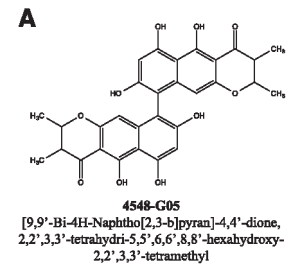Pathologist Keqiang Ye and his colleagues have been prolific in finding small molecules able to mimic the action of the brain growth factor BDNF. Aiming to export that success to similar molecules (that is, other receptor tyrosine kinases), they have been searching for potential drugs able to substitute for insulin.
Diabetes drugs Januvia (sitagliptin) and Lantus (insulin analog) are top 20 drugs, both in terms of dollars and monthly prescriptions, and the inconvenience of insulin injection is well known, so the business potential is clear.
A paper published in the journal Diabetes in April describes Ye’s team’s identification of a compound called chaetochromin A, which was originally isolated by Japanese researchers studying toxins found in moldy rice. Chaetochromin A can drive down blood sugar in normal, type 1 diabetes and type 2 diabetes mouse models, the authors show.
See here for another compound identified in Ye’s lab with similar properties.
A note of caution: chaetochromin A has a polyphenolic structure. Anything with a lot of benzene rings and –OH’s qualifies as a polyphenol (see below), and respected drug discovery blogger Derek Lowe says compounds with polyphenol structures are notorious for misleading and annoying medicinal chemists. However, Ye and his collaborators have biochemistry data showing that their molecule is binding specifically to the insulin receptor. This suggests that medicinal chemists can get to work tweaking.


